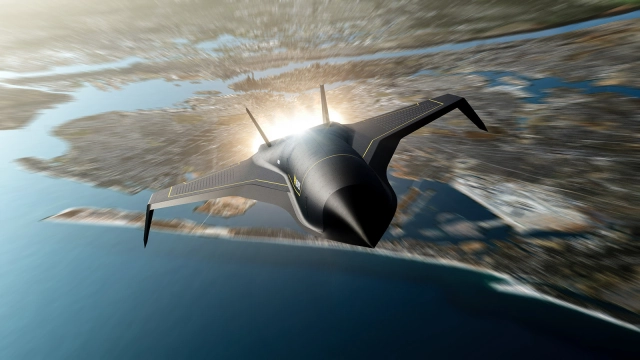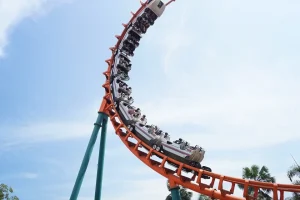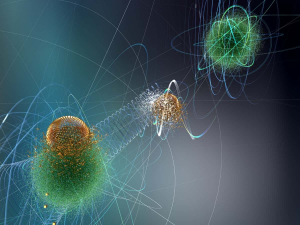If you have recently watched Top Gun: Maverick and were able to peel your eyes off of Tom Cruise, you may have noticed that in the very beginning of the film, Maverick flies in a jet called the Darkstar. This sleek, dart shaped jet with very thin wings reaches the high speed of Mach 10. While the Darkstar is a real prototype of a hypersonic jet, the portrayal of this scene is only possible because of film editing. So the question is, are hypersonic jets complete fiction or are they real? The answer to that is the latter. However, before learning about supersonic and hypersonic jets, it is necessary to understand what a Mach is. Machs are a measure of speed, with 1 Mach being equivalent to 767 mph, the same speed that sound travels at. Subsonic speeds are less than 1 Mach, supersonic is anywhere between Mach 1 and Mach 3, and hypersonic is above Mach 5. Mach 5 is equivalent to one mile per second.
The Darkstar was designed by Lockheed Martin’s Skunk Works division. Lockheed Martin is a global aerospace and security company. They design technology for military purposes as well as aeronautics (air travel). The Skunk Works division is specifically responsible for aircraft design. One of the leading engineers on the Darkstar project, Brian Hershberger, helped break down the parts of the Darkstar. The Darkstar would theoretically be powered by an engine called the scramjet. If you watch the scene where the Darkstar is in the sky, you may notice that while flying, there is white smoke surrounding the jet. This smoke is plasma as the temperature around the plane rises to the point where air breaks down. Considering these conditions and aerospace dynamics, Skunk Works tried to design the most realistic jet it could.
The Darkstar is based on two jets, the SR-71 Blackbird and the F-35 Lightning II. The Blackbird, built in 1966, is the fastest manned air breathing jet to ever fly. The reason it is called “air-breathing” is because of its use of ramjets. The Blackbird is 17% powered by a turbojet engine; however, in order to reach its top speed of Mach 3.3, it must switch to a ramjet engine. The ramjet engine brings high pressure air through a funnel where the air is slowed down before reaching the combustion chamber. In the combustion chamber, the air is ignited after being mixed with fuel. The Blackbird is built with titanium in order to resist temperatures up to 600 Fahrenheit, but if the plane went any faster it would fail. Top Gun’s Darkstar is also similar to the F-35 Lightning II. This jet was designed in 2006 and can go up to Mach 1.6 meaning it is supersonic. It is a long range fighter jet and has been used in combat numerous times. Between these two jets, the model of the Darkstar was formed.
However, these jets are not the fastest. The X-43A, created by NASA and tested on November 16, 2004, is an unmanned jet that reached the same speed as the Darkstar in Top Gun: Mach 10. The jet is powered by a scramjet engine which is different from a standard rocket power engine.
Normally rocket engines are fueled by burning liquid oxidizers and hydrogen fuel in a combustion chamber. The combustion creates high pressure gasses which flow through a nozzle and propels the plane. The scramjet engine on the other hand takes in oxygen while flying instead of using onboard oxygen. The steps of the scramjet engine are as follows: the front of the jet takes in the air, the forward velocity compresses the air into the engine, hydrogen fuel is injected into the stream of air and finally combustion causes hot gasses to accelerate the plane. The use of a scramjet engine instead of a normal engine cuts the weight of the craft by a large amount, because no oxygen is stored onboard.
Given the SR-71 Blackbird, the F-35 Lightning II, and the X-43A, the technology of the Darkstar is barely a fiction. While no man has actually flown in a hypersonic jet, unmanned Mach 10 jets do exist. Brian Hershberger, the leading engineer on the actual Darkstar, believes that by the end of this decade there could be crewed hypersonic jets. In the meantime, Maverick remains the fastest man alive.






